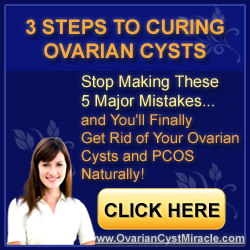Uterine Fibroids: What Are They?
Uterine fibroids are normally non-cancerous (benign) tumors that are composed of smooth muscle tissue. This is the same tissue that makes up the uterine wall. The tissue in the tumor is normally thicker than that of the uterine wall.
What Causes These Fibroids?
It is not clear what actually causes these fibroids but there are many factors that can be the main culprit. Family history seems to play a role in these tumors developing. Females in the same family seem to develop these more often that families with no history of them.
Race also seems to be a common factor. African American women tend to develop these tumors two to three times more often than Caucasian women or women of various other races. Most African women develop the tumors in their twenties while women of other races normally do not develop them until their 30s or 40s.
It is also believed that these tumors are more likely to develop in females who began their first menstrual cycle before the age of 10. Also, consumption of alcohol, infections of the uterus, and hypertension could be the cause of their development.
It appears that estrogen causes increased growth of the tumors as well as pregnancy, but most tumors will decrease in size after delivery. Menopausal women tend to see a decrease in the size of the fibroids as well.
Fibroids appear in nearly 50% of women but rarely show any symptoms and most women aren’t aware that they have them.
Symptoms of Fibroids
If symptoms do occur it is usually in the form of abnormal or heavy bleeding. There may also be some localized pain if the tumor burst. If the tumors are large, there may be some pelvic pain, pressure on the bladder, or pressure on the rectum. This can cause frequent or obstructed urination as well as pain with defecation.
Problems That Might Occur
In very rare cases, fast growing fibroids can be cancerous. This occurs in only 1% of those afflicted. Normally, the tumors are closely monitored for rapid growth which can indicate a potential problem.
Fibroids that grow to be large can pose more serious problems. They can lead to recurring miscarriages if not removed. Some may experience fertility issues due to the fact that some tumors are located in the sub mucosal area of the uterus. This causes deformities in the uterine cavity and leads to problems conceiving.
How Are These Fibroids Discovered?
Normally, a fibroid is discovered by a routine pelvic exam. If the patient is experiencing pain or bleeding, the physician may order an ultra sound. This is the most accurate way of finding them.
There is also a test called a hysterosalpingogram that helps with the diagnosis. This is done by injecting contrast fluid into the uterus through the cervix while performing an ultra sound. This will show any masses that might be present.
